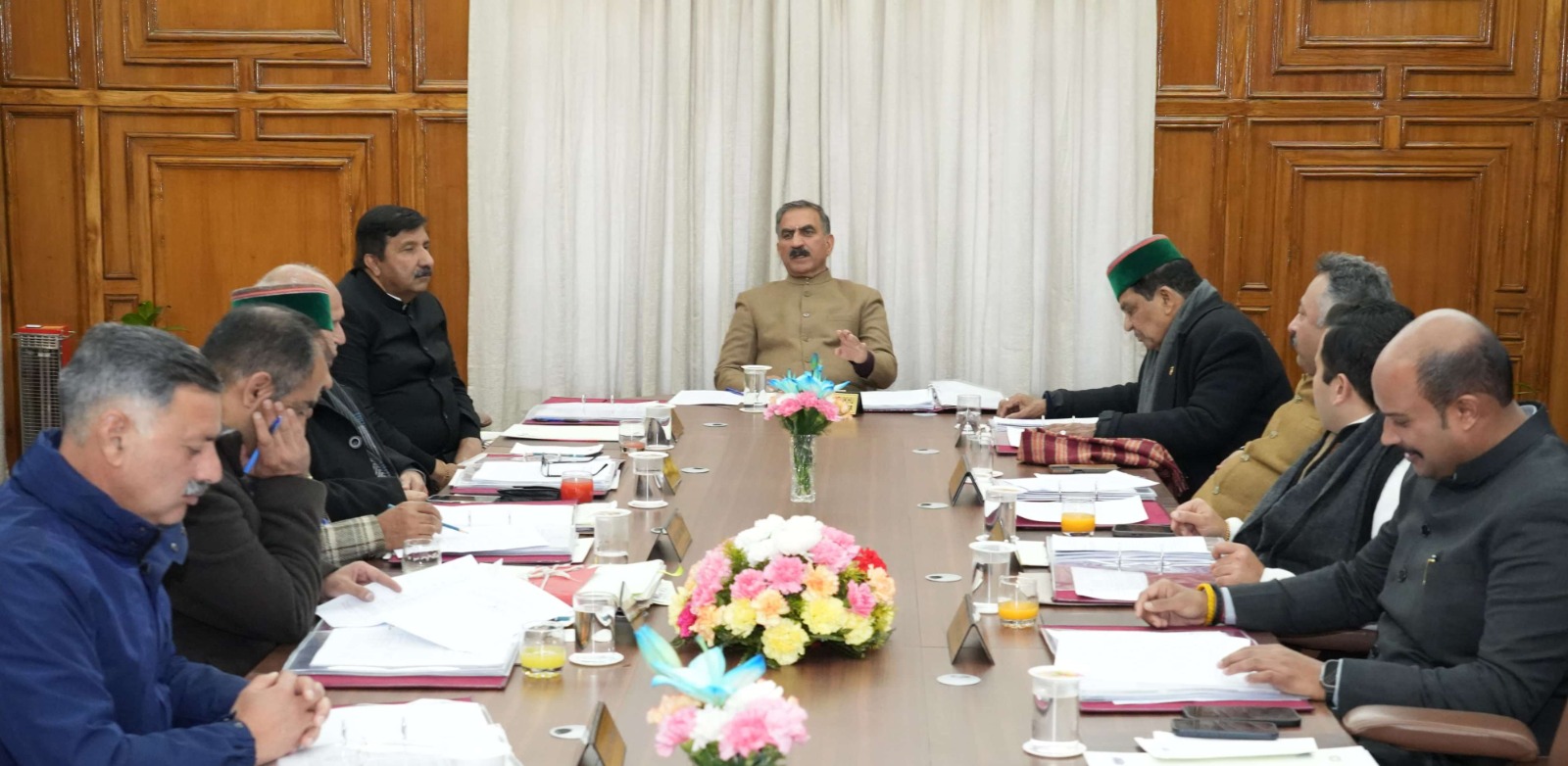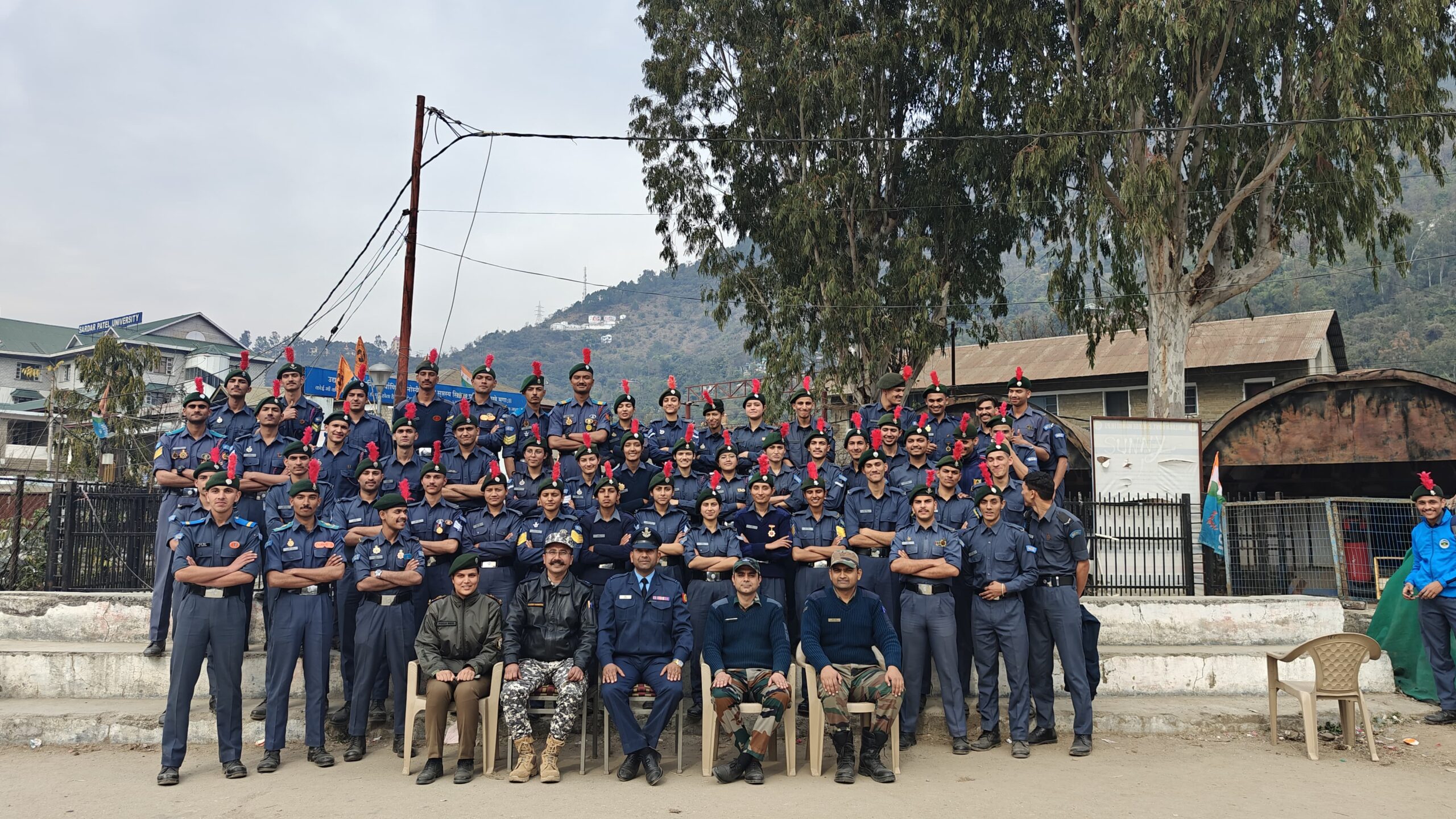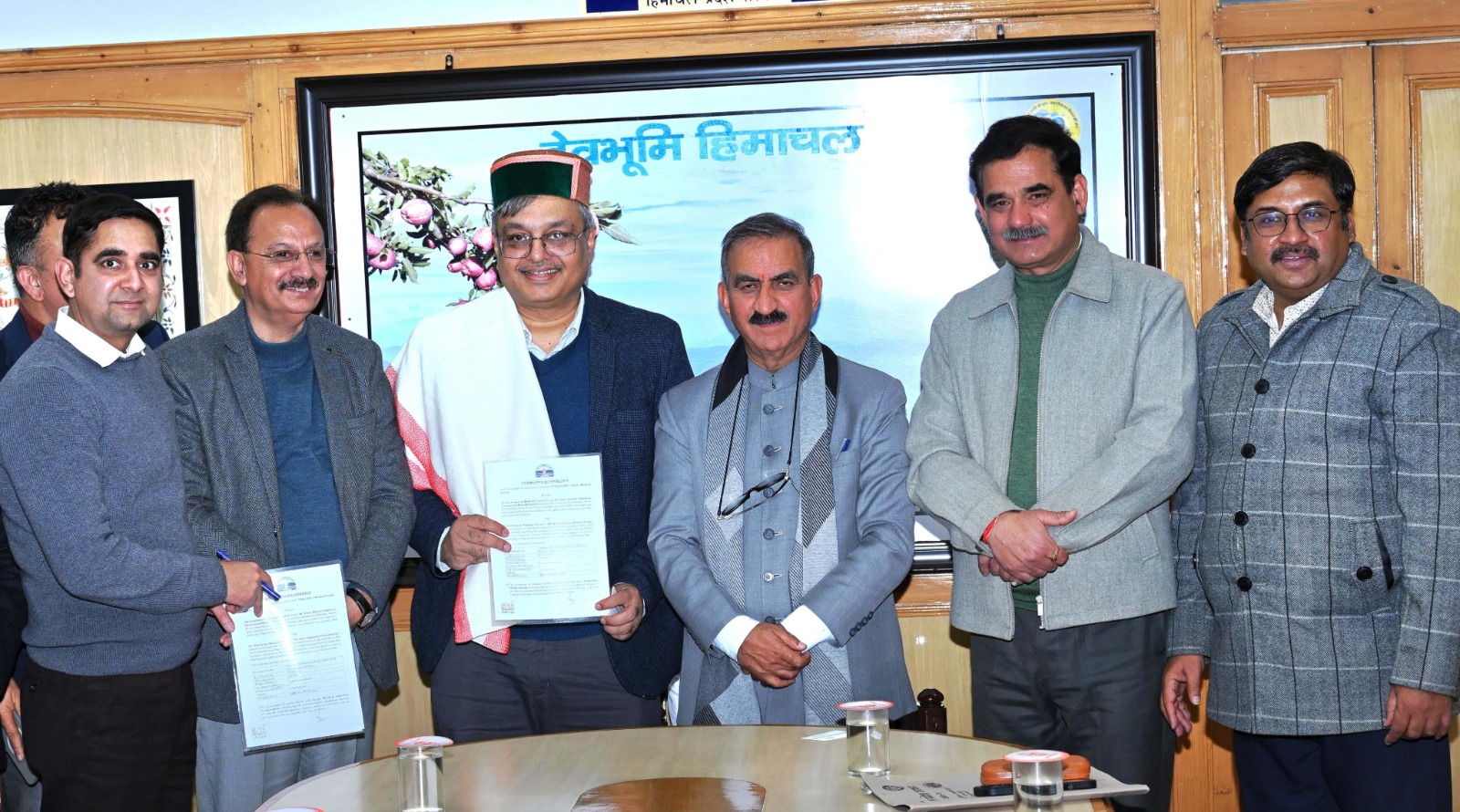Himachal Cabinet Pays Tribute to Dr. Manmohan Singh, Approves Key Initiatives in Development and Governance.
Shimla:
The Himachal Pradesh Cabinet, chaired by Chief Minister Sukhvinder Singh Sukhu, convened today to pay tribute to the late former Prime Minister Dr. Manmohan Singh. A two-minute silence was observed in his memory, acknowledging his immense contributions to the nation and to the state’s development. The Cabinet highlighted key projects that came to fruition under Dr. Singh’s visionary leadership, including the Atal Tunnel, several medical colleges, IIT Mandi, IIIT Una, and the National Institute of Fashion Technology (NIFT) in Kangra.
The Cabinet also recalled Dr. Singh’s transformative tenure as Prime Minister and Union Finance Minister. His efforts, including the introduction of landmark policies like the Right to Information Act, Right to Education Act, the Food Security Act, and Direct Benefit Transfer (DBT), were recognized as milestones in India’s development. Furthermore, the Indo-US Nuclear Deal was celebrated as a strategic achievement under his leadership.
In a significant move, the Cabinet approved renaming the Himachal Pradesh Institute of Public Administration (HIPA) as the Dr. Manmohan Singh Himachal Pradesh Institute of Public Administration, in honor of his contributions.
The meeting also saw several important decisions aimed at furthering development and addressing key issues in the state. Among them, the Cabinet approved the inclusion of families in the Below Poverty Line (BPL) list under various criteria, such as families without adult members between 18 and 59 years, families headed by women, and those affected by chronic illnesses or disabilities.
To tackle the growing drug abuse problem, the Cabinet sanctioned the formation of a Special Task Force to combat drug trafficking and organized crime through a multi-faceted approach. The government also decided to promulgate an ordinance to amend the Indian Stamp Act, enabling a uniform stamp duty rate on specific land transactions under the Himachal Pradesh Tenancy and Land Reforms Act.
Environmental conservation also remained a priority, with the Cabinet approving a ban on felling trees, except for Safeda, Poplar, and Bamboo, and endorsing a ten-year programme for sustainable management. Additionally, the area surrounding the Tara Devi Temple in Shimla was designated as a Green Area to minimize environmental footprints.
To further strengthen governance, the Cabinet approved the creation of several new administrative positions and structures. A total of 10 Junior Office Assistant (IT) posts will be filled for the Himachal Pradesh Public Service Commission. Additionally, the Cabinet decided to open new Sub Tehsils in key districts like Shimla, Chamba, and Kangra to improve accessibility for citizens. The Sub Tehsil Panchrukhi in Kangra district will also be upgraded to a Tehsil to better serve local communities.
In a move to boost the state’s power and energy sector, the Cabinet authorized the Department of Energy to handle allotments and monitoring for hydro, solar, and other green energy projects above 5 MW, including the establishment of a 1 MW Green Hydrogen project in Nalagarh by HPPCL. To ensure sustainable development, Green Energy Development Charges will be imposed on Pumped Storage Projects.
Further, the Cabinet approved the creation of the Himachal Pradesh State Water Informatics Centre to enhance water data collection and dissemination. It also decided to declare the Rathal Jatar Mela in Shimla as a district-level fair.
These decisions come as part of the state government’s ongoing efforts to streamline governance, promote sustainable development, and improve public services. The Cabinet’s focus on digitalization, job creation, environmental protection, and infrastructural upgrades demonstrates a comprehensive approach to tackling both immediate and long-term challenges facing Himachal Pradesh.



